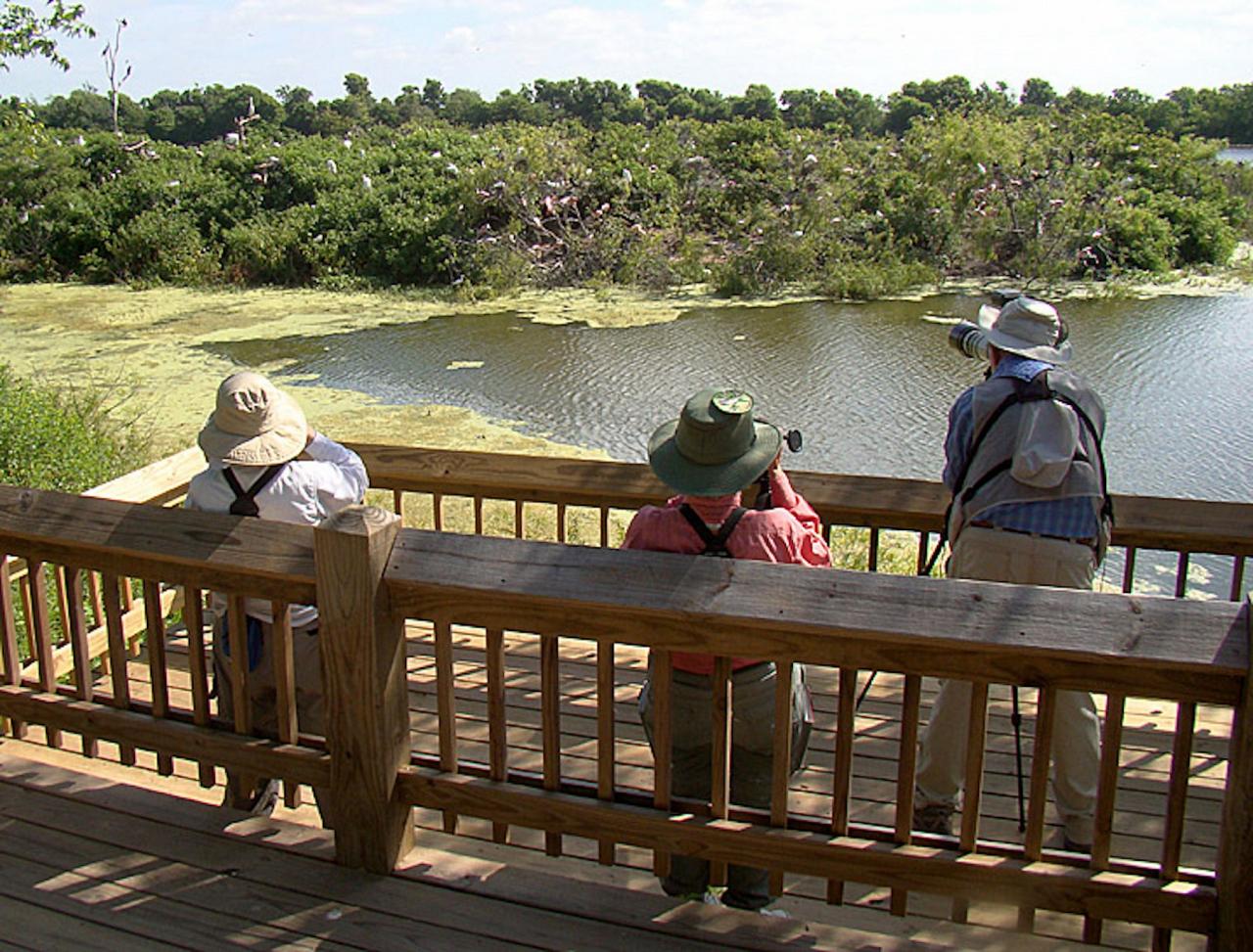The Upper Texas Coast has long been recognized as one of the best places to be during spring migration. Each year, 25+ species of warblers pass through the area's coastal woodlands, as well as many species of vireos, thrushes, flycatchers, and other passerines. Although the presence of songbirds is strongly weather-related, other birds are numerous and more predictable. Up to 36 species of shorebirds include plovers, terns, most of the country's herons and egrets, pelicans, Black Skimmers, and several species of gulls.
During the first part of the tour, we investigate the Big Thicket, northeast of Houston. There we see southeastern specialties like Red-cockaded Woodpecker, Bachman's Sparrow, Fish Crow, and Brown-headed Nuthatch.
Several nesting warblers may be on territory, including Prothonotary, Hooded, Kentucky, Pine, Prairie, and Swainson's. The Big Thicket area is also known for its diversity of dragonflies and damselflies (about 100 species) and butterflies (up to seven species of swallowtails in a single spot!), and we won't ignore these as they appear. For the balance of the time, we alternate between the coastal woodlands at High Island, other nearby migrant hotspots, and the surrounding rice fields, beaches, and wetlands around Galveston Bay.
Our schedule is somewhat weather-dependent: North winds, rain, or cold fronts put down migrating birds and we search for them in woodlands behind the Gulf's shores. If rice fields are flooded, we stand a good chance of seeing shorebirds like American Golden-Plovers, Stilt, Semipalmated and Buff-breasted Sandpipers, and Hudsonian Godwit, as well as Black-bellied Whistling-Ducks, and both White-faced and Glossy Ibises. Along the coast, we look for Roseate Spoonbill, Reddish Egret, American Oystercatcher, and the endangered Piping Plover. In the process, we have a chance to study a variety of rails, shorebirds, terns, and other waterbirds.




Tour Highlights
- Enjoy the pulse of migration at preserves created by the Houston Audubon Society; your visit supports protected habitat for thousands of migrants
- Listen to the cacophony of hundreds of breeding herons at Smith Oaks Rookery
- Study a smorgasbord of migrant shorebirds with on the Bolivar Peninsula
- Marvel at or photograph stunning species like Roseate Spoonbill and Scarlet Tanager
- Watch as many as 25 species of warblers in bright, breeding plumage
- Discover secretive rails, bitterns, and myriad other species at Jocelyn Nungaray National Wildlife Refuge
- Bird pine country for southeastern specialties like Red-cockaded Woodpecker and Bachman’s Sparrow




Trip Itinerary
Itineraries are guidelines; variations in itinerary may occur to account for weather, road conditions, closures, etc. and to maximize your experience.
Wed., Apr. 22 Arrivals in Houston
Welcome to Texas! We gather as a group at the airport and depart mid-afternoon for Winnie, Texas, population: 2800. This tiny town is about an hour's drive from Houston, and positions us well for exploring local Nature Conservancy preserves over the next few days.
Tonight join us for a welcome dinner, followed by a presentation by an expert Nature Conservancy (TNC) staff member, who will update us on current initiatives along the Texas coast. Learn about the plan for the days ahead and meet your fellow Legacy Club traveling companions, your TNC host, and your expert naturalist guides at this enjoyable evening.
Accommodations in Winnie (D)
Thur., Apr. 23 Big Thicket National Preserve
Our tour is timed well for the annual spring migration of passerine birds. Here along the Texas coast, tiny migrants make landfall after crossing the Gulf of Mexico, fueling up before heading north to their summer breeding grounds in North America. Big Thicket National Preserve is a key location for these birds, and we spend the morning exploring here, looking for bright and beautiful warblers, including Swainson's, Kentucky, Hooded, Yellow-throated, and Prairie, as well as chicken-sized Pileated Woodpecker and bright and bold Red-headed Woodpecker. We might find stunningly colored Wood Ducks on the streams and sloughs, and we are surrounded by busy flycatchers, tanagers, and vireos, too. But Big Thicket isn’t just for the birds. The preserve's 176 square miles encompass nine different ecosystems, from long-leaf pine forests to bayous thick with ancient cypress trees, home to a wide variety of mammals, reptiles, mollusks, and more … Did you know? Four of the five North American carnivorous plants are found in the Big Thicket; we take time during our visit to explore a Pitcher Plant field that also includes sundews, bladderworts, and butterworts. A local TNC staff member joins us today and will spend time talking about The Conservancy’s local conservation efforts.
Accommodations in Winnie (B,L,D)
Fri., Apr. 24 High Island | Boy Scout Woods | Smith Oaks | Rollover Pass
We don't have to travel far today to explore more excellent preserves, these managed by the Houston Audubon Society. These woodland oases or "coastal mottes," provide refuge to thousands of migrant songbirds. On High Island, we spend time exploring Boy Scout Woods Sanctuary, Smith Oaks Sanctuary, and Rollover Pass.
Boardwalk trails throughout these preserves allow for easy walking and consistently close viewing without undue disturbance to birds and other wildlife. Walking the trails, it’s clear we are visiting at the peak of migration! Warblers, tanagers, thrushes, vireos, buntings, and more are unmissable. Warblers passing through the woodlands here include Blue-winged, Blackburnian, Kentucky, Hooded, and the rare Cerulean. Bold and bright Rose-breasted Grosbeak and Scarlet Tanager gorge among the fruiting mulberry trees, while unbelievably pink Roseate Spoonbill work their name-sake bills back and forth, back and forth through the shallow waters where we also keep our eyes peeled for American Alligator. The local heron and egret rookery at Smith Oaks should be busy and impressive with Yellow-crowned and Black-crowned Night Heron, Little Blue and Tricolored Heron, Snowy, Western Cattle, and Great Egret, White Ibis, and spoonbill.
After an afternoon break, we drive down the Bolivar Peninsula, checking several areas along the shore for terns, gulls, and wading birds. Most impressive include the extra large Black Skimmer, bright orange American Avocet, and dainty Black-necked Stilt.
Accommodations in Winnie (B,L,D)
Sat., Apr. 25 Jocelyn Nungaray National Wildlife Refuge | Bolivar Ferry to Galveston Island
We leave early this morning for the 34,000-acre Jocelyn Nungaray (formerly Anahuac) National Wildlife Refuge, located on the eastern end of Galveston Bay. En route we see groups of feeding shorebirds in the agricultural fields, looking for American Golden-Plover, Greater and Lesser Yellowlegs, and Stilt Sandpiper. We circumnavigate Shoveler Pond on the auto route around the refuge, stopping many times to get out with the scopes and view the abundant wading birds.
Some 280 bird species have been recorded here, attracted to prairies, patchy woodland habitat, and the marshes. Seaside Sparrow is fairly common in grasses near the bay edge. Roseate Spoonbill always attract a lot of attention; here they feed alongside White, and sometimes White-faced, Ibises. Marsh Wren provide a background chorus, broken by the raucous calls of Boat-tailed Grackle. Yellow-crowned Night-Heron and both Least and American Bitterns often put on a good display; Least Bitterns nest here and may be numerous.
American Alligators are particularly plentiful in the extensive ponds and wet prairies, while Northern Harrier hunt from above. While we are here, butterfly enthusiasts want to look for Salt Marsh Skipper. For those new to butterfly watching, the garden at refuge headquarters makes learning and comparing species much easier! Mammals we may encounter include Coyote, Raccoon, Mink, Muskrat, and Swamp Rabbit. On short trails near headquarters we can stretch our legs and scan for songbirds before our drive back to High Island.
Accommodations in Lake Jackson (B,L,D)
Sun., Apr. 26 Gulf Coast Bird Observatory | Brazos Bend State Park
We start the morning back on the coast at the Gulf Coast Bird Observatory’s Quintana Neotropical Bird Sanctuary. The observatory is a non-profit that conducts impressive conservation projects, including habitat enhancement, land acquisition, migration studies, and regional habitat mapping. We explore the sanctuary’s trails and for those that wish, climb the observation tower. Quintana Island between the mouths of the Old Brazos and New Brazos Rivers. Originally part of the mainland, it became an island in the 1920s following the construction of the Intracoastal Waterway. Its position directly along a migration route makes Quintana Island a vital stopover.
We spend the rest of the day exploring Brazos Bend State Park. Our local TNC preserve manager joins us and talks about conservation efforts at Brazos Woods Preserve. Just 45 miles from Houston, Brazos Bend State Park offers 37 miles of trails, and caters to hikers, horseback riders, and fishing enthusiasts. We take time to explore different sections of the park’s 5,000 acres of bottomland and upland coastal prairie, tallgrass prairie, live-oak gallery forests and mixed bottomland hardwood forest. Like much of Texas’ coast in April, the park’s abundant woodlands provide refueling stops for migratory birds. The park also boasts several types of wetlands including swamps and marshes, lakes and temporary prairie ponds. Wildlife can include more than the migrant birds we see overhead—American Alligators are abundant, and feral pigs, racoons, and even bobcats call Brazos Bend home.
Accommodations in Lake Jackson (B,L,D)
Mon., Apr. 27 Departures from Houston
Our flock disperses today as we leave Lake Jackson in the morning and head to Houston for flights home. (B)
Cost of the Journey
Cost of the journey is $3890 DBL / $4870 SGL from Houston, Texas. Cost includes: all accommodations; all meals as stated in the itinerary; group airport transfers; ground transportation; professional guide services; park, preserve, and other activity fees; and miscellaneous program expenses.
Tour price does not include: roundtrip airfare to and from Houston or items of a personal nature such as laundry, porterage, telephone charges, or alcoholic beverages. Gratuities for maids or porters, and gratuity for your guides are not included—these are at your discretion, but highly appreciated and recommended.
Travel Details
Please plan to make air travel plans only after the minimum group size has been met. We will send you a confirmation email as soon as the trip has been confirmed.
Arrival and Departure Airport: George Bush International (IAH) in Houston
Arrival Details: Plan flights to arrive April 22, 2026 before 2:00 PM.
Departure Details: Plan flights to depart April 27, 2026 after 2:00 PM. We do plan to spend the morning birding, so please honor these flight times. Thank you!
Travel Tips: If you arrive early or stay on after the trip in Houston, there are dozens of motels close to the airport; The Hampton Inn Suites and the Holiday Inn are just two with reasonable rates and free airport shuttles.
Browse below for trip reports and species lists from past versions of this and other tours from this destination.
Texas
Big Bend & Davis Mountains
- April 2011
- April 2012
- April 2014
- April 2015
- April 2016
- August 2016
- April 2017
- April 2019
- May 2019
- April 2021
- May 2021
- April 2022
- April 2022
- May 2022
- April 2023
- April 2023
- May 2023
- April 2024
Big Bend Monsoon Madness
- August 2016
- August 2018
- July 2019
South Texas
- February 2012
- February 2014
- February 2018
- February 2019
- March 2019
- February 2020
- April 2021
- September 2021
- November 2021
- February 2022
- March 2022
- October 2022
- November 2022
- January 2023
- February 2023
- March 2023
- November 2023
- December 2023
- January 2024
- January 2024
- March 2024
- November 2024
- February 2025
- November 2025
Texas Coast
- April 2012
- April 2014
- April 2019
- April 2021
- April 2022
- April 2023
- April 2024
- April 2025
Texas Hill Country
- April 2013
- April 2015
- April 2017
- April 2018
- April 2019
- April 2021
- April 2022
- April 2023
- April 2024 (Solar Eclipse Tour)
- April 2025
-
Dave Mehlman
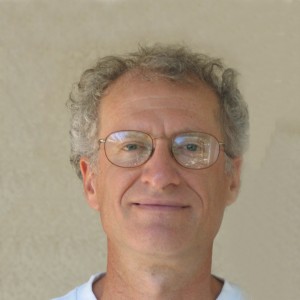
Dave is a naturalist with interests in birds, migration, ecosystems and natural disturbances, plants, and gardening. He holds a PhD from the University of New Mexico. Dave worked for The Nature Conservancy for 25+ years as Director of its Migratory Bird Program. He has researched in Latin American and the Caribbean. An avid birder, Dave enjoys teaching about natural habitats and local cultures. He has published papers in scientific and popular journals.
Other trips with Dave Mehlman
-
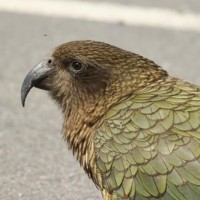 Birds & Nature of New Zealand FULL - Check out Island of Wonder: Birds & Nature of Sri Lanka!January 7 - 23, 2026
Birds & Nature of New Zealand FULL - Check out Island of Wonder: Birds & Nature of Sri Lanka!January 7 - 23, 2026 -
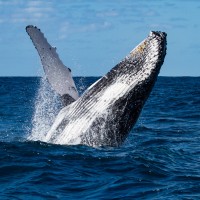 Southern California: Spring Coastal BirdingFebruary 16 - 23, 2026
Southern California: Spring Coastal BirdingFebruary 16 - 23, 2026 -
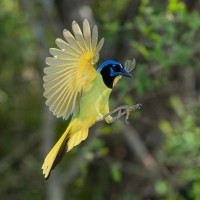 South Texas Birding & NatureMarch 11 - 19, 2026
South Texas Birding & NatureMarch 11 - 19, 2026 -
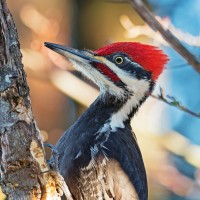 Oregon's Malheur NWR & Woodpecker WonderlandMay 18 - 27, 2026
Oregon's Malheur NWR & Woodpecker WonderlandMay 18 - 27, 2026 -
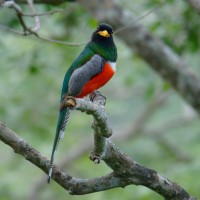 Arizona Monsoon Madness: Birding & Nature in a Season of Wonder!August 10 - 17, 2026
Arizona Monsoon Madness: Birding & Nature in a Season of Wonder!August 10 - 17, 2026 -
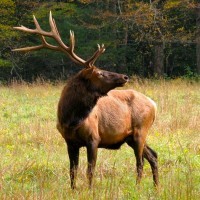 Yellowstone in The FallSeptember 19 - 25, 2026
Yellowstone in The FallSeptember 19 - 25, 2026 -
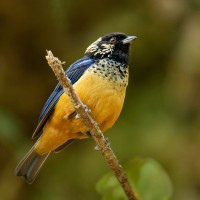 Western Panama: Tranquilo BayOctober 11 - 18, 2026, w/Mt. Totumas extension
Western Panama: Tranquilo BayOctober 11 - 18, 2026, w/Mt. Totumas extension -
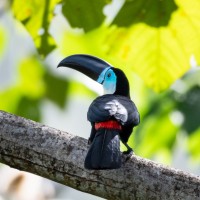 Thanksgiving in Trinidad & TobagoNovember 22 - December 1, 2026
Thanksgiving in Trinidad & TobagoNovember 22 - December 1, 2026
-
-
Steve Shunk
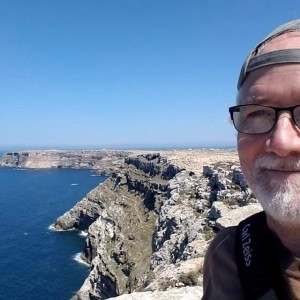
Steve Shunk started birding in the San Francisco Bay Area in 1989, and he moved to central Oregon’s ‘Woodpecker Wonderland’ in 1997, where 11 woodpecker species breed annually. This phenomenon led to a 20-year obsession studying this charismatic family of birds. Steve founded the region’s woodpecker festival in 2008, and his Peterson Reference Guide to Woodpeckers of North America was published in 2016. He has fed leeches (his own blood) in Malaysian Borneo, and he has watched Spotless Starlings swarming around the Greek ruins of Sicily. Steve’s Alaska adventures have taken him from Ketchikan to Barrow and St. Paul Island. One of his favorite destinations takes him to see ‘eastern’ warblers breeding across the boreal forest of Alberta, but recent adventures have led him to favor the cushion plants and condors of the Peruvian high Andes. Steve speaks at bird festivals across North America, and he returns annually to speak and guide at the Vallarta Bird Festival in far-western Jalisco, Mexico. Steve joined Naturalist Journeys earlier this year, and we are excited to have him on the schedule for 2021 and beyond.
Steve’s work as a field biologist has taken him from the Coast Range of Oregon to California’s Sierra Nevada. Most recently, he conducted point-count and woodpecker surveys for a study in the Central Oregon Cascades. Steve co-founded the East Cascades Bird Conservancy (now East Cascades Audubon), and served as its first president. He also co-founded the Oregon Birding Trails Program and coordinated its flagship project, the Oregon Cascades Birding Trail. When Steve is not traveling the world for tours and lectures, he can be found writing, skiing, hiking, and watching woodpeckers at home in lovely Sisters, Oregon.Other trips with Steve Shunk
-
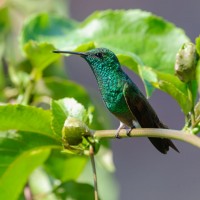 Pacific Mexico & Rancho Primavera: A Winter Escape! With Southeast Arizona Bird Observatory - FULL!January 21 - 28, 2026
Pacific Mexico & Rancho Primavera: A Winter Escape! With Southeast Arizona Bird Observatory - FULL!January 21 - 28, 2026 -
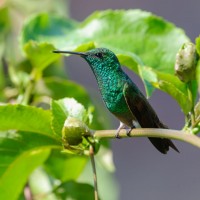 Pacific Mexico & Rancho Primavera FULL - See our April departure!February 15 - 21, 2026
Pacific Mexico & Rancho Primavera FULL - See our April departure!February 15 - 21, 2026 -
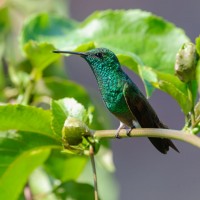 Pacific Mexico & Rancho Primavera FULL - See our April departure!March 8 - 14, 2026
Pacific Mexico & Rancho Primavera FULL - See our April departure!March 8 - 14, 2026 -
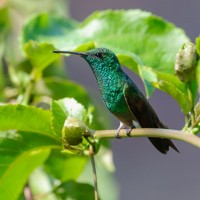 Pacific Mexico & Rancho Primavera April 14 - 20, 2026
Pacific Mexico & Rancho Primavera April 14 - 20, 2026 -
 Oregon's Malheur NWR & Woodpecker WonderlandMay 18 - 27, 2026
Oregon's Malheur NWR & Woodpecker WonderlandMay 18 - 27, 2026 -
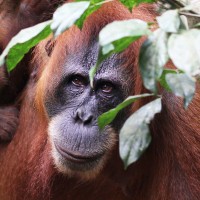 Wild Borneo: Endemic Birding & NatureSeptember 30 - October 14, 2026
Wild Borneo: Endemic Birding & NatureSeptember 30 - October 14, 2026 -
 Pacific Mexico & Rancho Primavera Thanksgiving in Mexico!November 24 - 30, 2026
Pacific Mexico & Rancho Primavera Thanksgiving in Mexico!November 24 - 30, 2026
-
Essential Information +
Packing List +
Suggested Reading List +
Useful Links +
Photo credits: Banners: Blackburnian Warbler by Tom Dove; Great Egret Rookery, Naturalist Journeys Stock; Roseate Spoonbills by Carlos Sanchez; Birding Pine Forest, Naturalist Journeys Stock; Yellow-throated Warbler by Carlos Sanchez; Indian Paintbrush, Naturalist Journeys Stock; Forest Birding by Tony Beck; Indigo Bunting by Doug Greenberg; Snowy Egret and White Ibis by Betty Andres; Green Heron by Betty Andres; American Alligator by Rob Colyer; Prothonotary Warbler by Doug Pratt; Red-cockaded Woodpecker, Tom Dove; Red-headed Woodpecker, Terry Peterson; Brown Pelican, Delsa Anderl; Creole Pearly-eye, BA; Blackburnian Warbler, TD; Male Roseate Skimmer, BB; Magnolia Warbler, Doug Greenberg; Rose-breasted Grosbeak, Mahlon Hale; Rose-breasted Grosbeak, Mahlon Hale; Black Skimmer, Carlos Sanchez; American Oystercatcher, Carlos Sanchez; Sanderlings, Carlos Sanchez; Jocelyn Nungaray National Wildlife Refuge, NJStock; Greater Yellowlegs, NJStock; American Alligator, Rob Colyer; Birding High Island, NJStock; Roseate Spoonbill, NJStock; Softshell Turtle, NJStock; American Avocets, Delsa Anderl; Tropical Mockingbird, Betty Andres; Egret Rookery, NJStock; Group x2, NJStock; Prothonotary Warbler, Carol Knabe; Red-headed Woodpecker, Doug Greenberg.









